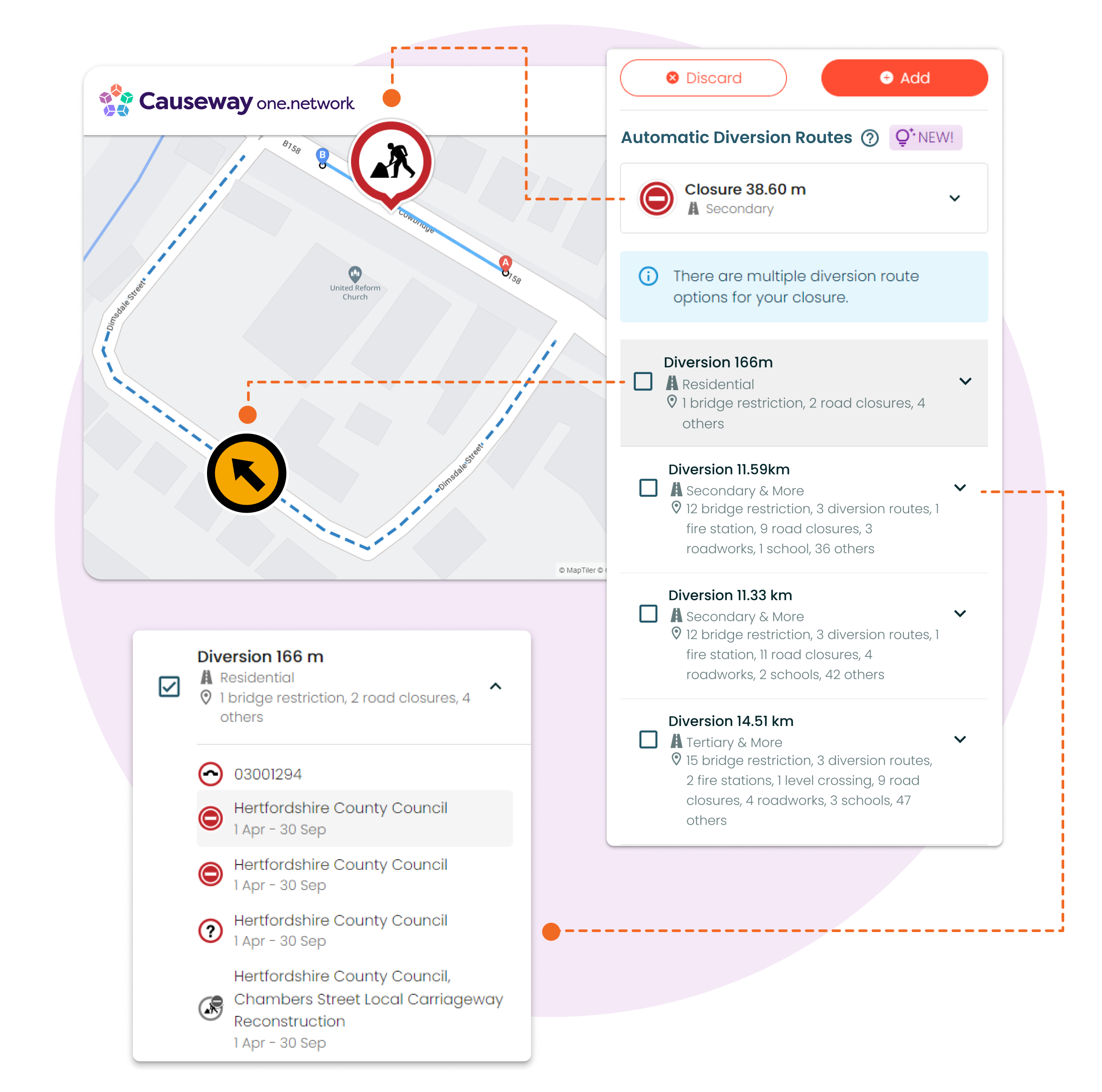Hertfordshire, a diverse county, boasts a mix of bustling garden cities, post-war new towns, quaint historic market towns, and picturesque villages. Hertfordshire County Council (HCC) oversees the maintenance of an extensive network of 3,000 miles (about the width of the United States) of roads and pavements and handles more than 2,500 Temporary Traffic Regulation Orders (TTROs) annually.

The Challenge
Amid an industry-wide race to invest in and enhance infrastructure, there has been a 45% increase in road and street works (2018-2023). HCC, like other local authorities, has been facing the challenge of completing a significant volume of internal projects, amongst demand for crucial initiatives such as fibre rollout, electric vehicle charging installation and water infrastructure improvements.
In 2023, HCC plotted over 3,700 road closures using Causeway one.network’s Traffic Management solution. Despite having a dedicated team of 10 officers, the process of planning and mapping these closures and diversions consumed considerable time for the team, with each diversion taking up to 4 minutes.
Key Benefits
50% more efficient at diversion planning
with each diversion plan taking just two minutes.
Diversions created in a single click
by adopting ADR feature into the network coordination process.
Liberated time for the Network Management team
allowing officers to work on other crucial tasks.
"Where our team is so busy, any time we can gain back is invaluable. The Automatic Diversion Routes feature significantly speeds up our urban diversion planning, allowing us to process more permits, respond to more enquiries and attend important on-site meetings."
Hertfordshire County Council
The Solution
Since 2014, HCC has been using Causeway one.network to digitalise traffic management planning. The platform has enabled them to effectively plan, coordinate, and communicate roadworks and closures throughout the county.In late 2023, Causeway introduced a new feature for the Causeway one.network Traffic Management module: Automatic Diversion Routes (ADR).
This innovative tool generates a list of optimal diversion routes based on your road closure and plots it automatically for you on Causeway one.network. Factoring in road class, planned roadworks, proximity to schools, bridges, weight limitations and more, it highlights all potential diversion risks that might influence the selection of the most suitable route.
HCC has embedded this new feature into its network coordination workflow, enabling smarter, faster, more informed decision-making. The team use ADR to support planning and coordination for both planned and emergency roadworks and have noted a significant increase in efficiency – particularly in urban areas and for surfacing programmes.
HCC Network Officer, Tom Cole, said:
“The Automatic Diversion Routes feature on Causeway one.network saves me a lot of time, especially when we have big programmes of internal surfacing works. I can get through a batch of 15 or so servicing jobs in half the time now, and each diversion takes just a single click to create.”
The Results:
By using ADR, HCC can now create and plot urban road closures and diversions in just two minutes. This 50% reduction in planning time has not only sped up roadworks coordination, but also liberated time for the team to focus on other crucial tasks.
After seeing such success, HCC’s Network Management team is now collaborating with Causeway to enhance and optimise the ADR functionality for rural diversion planning and working with other team members and council departments to expand the use of Traffic Management and ADR.

